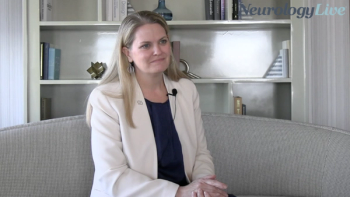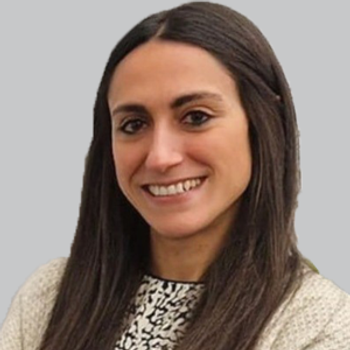
The Challenges of Stroke Care in Rural America
Stroke care, including acute treatment and prevention, faces unique challenges in rural areas where disease awareness is lacking and access to high-level care in scarce.
Yasir Al-Khalili, MD
Around 60 million Americans (19.3% of the population) live in rural areas of the United States, according to the United States Census Bureau. But before we dig into
Rural areas are defined by exclusion as any area that is not an urban area, which means that we need to define urban to understand what is not urban and is therefore rural. When the Census Bureau first released urban population data in the Statistical Atlas of 1874, these urban area geographies were not defined. In 1910, a population threshold of 2500 or more was adopted as the first urban definition. Due to the increase in suburbanization, in 1950 the Census defined urban by identifying densely settled areas with populations of 50,000 or more as ‘’urbanized area’’ while ‘’urban places’’ were defined as those with a population of at least 2500. In 2000, urban clusters were first introduced to replace urban places outside of urbanized areas.1
Studies have shown almost one-fifth of patients with ischemic stroke are diagnosed and treated in rural areas. The 1996 National Health Interview Survey revealed that rural populations are 1.45 times more likely to have a stroke in their lifetime when compared to populations in urban areas.2 Prevalence of stroke in rural compared to urban areas is 15.1 per 1000 individuals and 10.4 per 1000 individuals, respectively.3
It has also been reported that in high human development countries including the United States, there is a higher stroke mortality in rural than in urban areas; however, in low and medium human development countries it’s the opposite. Notably, over half the rural populations earn low incomes.
There are many reasons why patients with stroke in rural America suffer when compared to their counterparts in urbanized places. Among the many reasons, there tends to be limited emergency medical services (EMS) training, a shortage of neurologists, time delays in triage, limited technology, and most importantly lower awareness and recognition of stroke symptoms and risk factors.4
WATCH:
A study showed that only 39% of hospitals in the state of Montana and Wyoming are capable of performing a CT scan around the clock.5 There is less designated stroke teams and only a small portion of hospitals in rural areas are involved in quality improvement programs. Rural populations are also found to be less likely to receive
In the United States, about 50%, 40%, and 20% of the population has access to a dedicated stroke center within 60, 45, or 30 miles, respectively, and of course the numbers are even higher for rural populations.8 In the southern part of Virginia where I practice, there is one comprehensive stroke center in a 6300 square miles area.9
However, as a rural neurologist, I feel that lack of awareness is the biggest reason for the above statistics. Prevention by increased awareness is very important and it is a crucial discussion that should be led by the rural neurologist through family discussion during the visitation, community outreach, or educating non-neurology physicians in the community.10
Organized stroke systems also require public awareness to facilitate proper and fast activation of EMS and eventually enable a rapid emergency department response to potential stroke victims.11
Despite all of the educational efforts, public knowledge remains poor when it comes to signs and symptoms of stroke as well as risk factors. Previous surveys of the general public suggest that up to 27% of the adult population do not recognize any signs or symptoms of acute stroke while up to 25% do not recognize any risk factor.12
Hypertension, for example, is one of the most prevalent diseases worldwide and is responsible for an estimated 51% of deaths due to stroke and is poorly controlled in rural areas versus urban areas.13 It has been very disappointing to see how few rural residents recognize that hypertension is even a risk factor for stroke.14
In one study by Kothari et al, 43% of the population surveyed did not know any single risk factor for stroke and 26% were not able to identify more than 1 risk factor. Although hypertension was the most commonly identified risk factor, even in individuals with the diagnosis of hypertension, only 31% identified hypertension as a risk factor. The elderly population (aged ≥65 years) were significantly less knowledgeable about stroke signs and symptoms than the younger population.12
Similarly, in a telephone survey of the Greater Cincinnati metropolitan area, only 15% of the general public reported “weakness” and only 6% reported “one-sided weakness” as a sign of stroke.12
In the Kothari et al study, only 2% of patients viewed their physicians as their primary source of stroke knowledge.12 A review by Hafsteinsdóttir et al published in 2011 found that patients and caregivers have many unmet educational needs.15 Perhaps even more concerning are findings from Hoffmann et al, who found that in the acute phase, 40% of patients and 67% of caregivers had unanswered questions related to stroke.16
Physicians must not only provide information but also must help the patient to comprehend and digest the information to be able to make a good decision regarding their health.17 Patient education as a discipline is fairly new, as the scientific journal Patient Education and Counseling was founded in 1976 at the First International Conference on Patient Counseling, but it has been changing and improving significantly.18 The Lalonde report published in 197419 discussed that not only biomedical aspects of health care are important but that patients could improve their health through education about behavioral changes related to their lifestyle, such as a healthy diet, enough exercise, and prevention of exposure to dangerous substances.20
In conclusion, physicians in rural communities could have a large impact on stroke prevention. Their contribution can have positive effects on stroke recognition, risk factors control, and seeking help in appropriate timing. Rural neurologists’ positive influence can be spread through community churches, blood pressure workshops, or talks on stroke symptoms and signs for high school students. All of these initiatives could help lower stroke morbidity and mortality in this vulnerable population.
Yasir Al-Khalili, MD, is an assistant clinical professor of neurology at Virginia Commonwealth University School of Medicine in Richmond, Virginia. He is board-certified in Neurology and Electrodiagnostic Medicine. He completed his internship, neurology residency, and clinical neurophysiology fellowship at Drexel University College of Medicine in Philadelphia, Pennsylvania.​​​​ Al-Khalili is also a member of the NeurologyLive Editorial Advisory Board.
REFERENCES
1. Urban Area Criteria in Federal Register Notices. United States Census Bureau.
2. Adams PF, Hendershot GE, Marano MA. Current estimates from the National Health Interview Survey, 1996. Vital Health Stat 10. 1999;(200):1-203.
3. National Stroke Association. Stroke remains a deadly mystery to many Americans. Be Stroke Smart 1996; 13:2.
4. Phipps MS, Jia H, Chumbler NR, et al. Rural-urban differences in inpatient quality of care in US Veterans with ischemic stroke. J Rural Health. 2014;30(1):1-6. doi: 10.1111/jrh.12029
5. Okon NJ, Rodriguez DV, Dietrich DW, et al. Availability of diagnostic and treatment services for acute stroke in frontier counties in Montana and Northern Wyoming. J Rural Health. 2006;22(3):237-241. doi: 10.1111/j.1748-0361.2006.00038.x
6. Adcock AK, Choi J, Alvi M, et al. Expanding Acute Stroke Care in Rural America: A Model for Statewide Success. Telemed J E Health. Published online October 9, 2019. doi: 10.1089/tmj.2019.0087
7. Leira EC, Hess DC, Torner JC, Adams HP. Rural-urban differences in acute stroke management practices: a modifiable disparity. Arch Neurol. 2008;65(7):887-891. doi: 10.1001/archneur.65.7.887
8. Albright KC, Branas CC, Meyer BC, et al. ACCESS: acute cerebrovascular care in emergency stroke systems. Arch Neurol. 2010;67(10):1210-1218. doi:10.1001/archneurol.2010.250
9. Virginia Cerebrovascular Disease. Division of Population Health Data, Virginia Department of Health. May, 2017.
10. Callison RC, Leira EC. Strategies to improve acute stroke care of patients in rural and other geographically dispersed areas. Curr Treat Options Neurol. 2008;10(6):450-454. doi: 10.1007/s11940-008-0047-4
11. Okon NJ, Fogle CC, Mcnamara MJ, et al. Statewide efforts to narrow the rural-urban gap in acute stroke care. Am J Prev Med. 2010;39(4):329-333. doi:10.1016/j.amepre.2010.05.019
12. Kothari R, Sauerbeck L, Jauch E, et al. Patients' awareness of stroke signs, symptoms, and risk factors. Stroke. 1997;28(10):1871-1875. doi: 10.1161/01.STR.28.10.1871
13. Tang X, Yang J, Li W, Rangarajan S, Teo K, Liu L, Yusuf S. Urban and Rural Differences of Blood Pressure and Hypertension Control in Chinese Communities: PURE China Study. J Am Col Cardiol. 2013(61)10. Supplement. Doi: 10.1016/S0735-1097(13)61350-9
14. Joubert J, Prentice LF, Moulin T, et al. Stroke in rural areas and small communities. Stroke. 2008;39(6):1920-1928. doi: 10.1161/STROKEAHA.107.501643
15. Hafsteinsdóttir TB, Vergunst M, Lindeman E, Schuurmans M. Educational needs of patients with a stroke and their caregivers: a systematic review of the literature. Patient Educ Couns. 2011;85(1):14-25. doi: 10.1016/j.pec.2010.07.046
16. Hoffmann T, McKenna K, Worrall L, Read S. Evaluating current practice in the provision of written information to stroke patients and their carers. Int J Ther Rehabil. 2004;11:303—310.
17. Hoving C, Visser A, Mullen PD, Van den borne B. A history of patient education by health professionals in Europe and North America: from authority to shared decision making education. Patient Educ Couns. 2010;78(3):275-281. doi: 10.1016/j.pec.2010.01.015
18. Wouda JC, Zandbelt LC, Smets EM, Van de wiel HB. Assessment of physician competency in patient education: reliability and validity of a model-based instrument. Patient Educ Couns. 2011;85(1):92-98. doi: 10.1016/j.pec.2010.09.007
19. Lalonde, M. (1974). A new perspective on the health of Canadians. Ottawa, ON: Minister of Supply and Services Canada. Retrieved from Public Health Agency of Canada website:
20. Daviet JC, Bonan I, Caire JM, et al. Therapeutic patient education for stroke survivors: Non-pharmacological management. A literature review. Ann Phys Rehabil Med. 2012;55(9-10):641-656. doi:10.1016/j.rehab.2012.08.011
Newsletter
Keep your finger on the pulse of neurology—subscribe to NeurologyLive for expert interviews, new data, and breakthrough treatment updates.


































